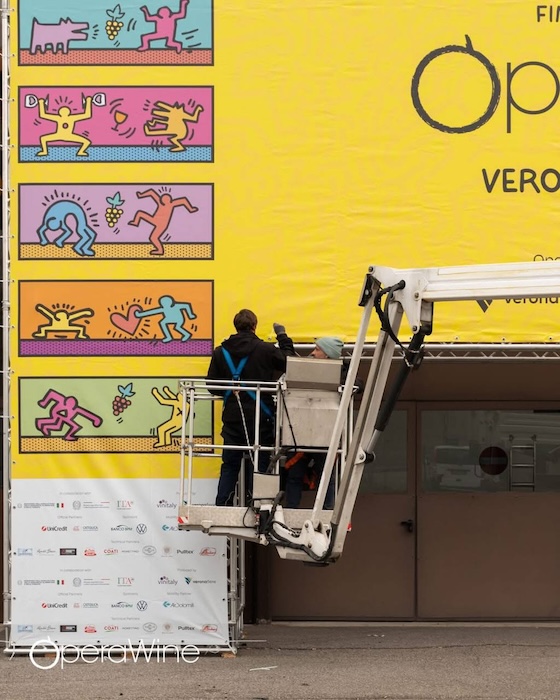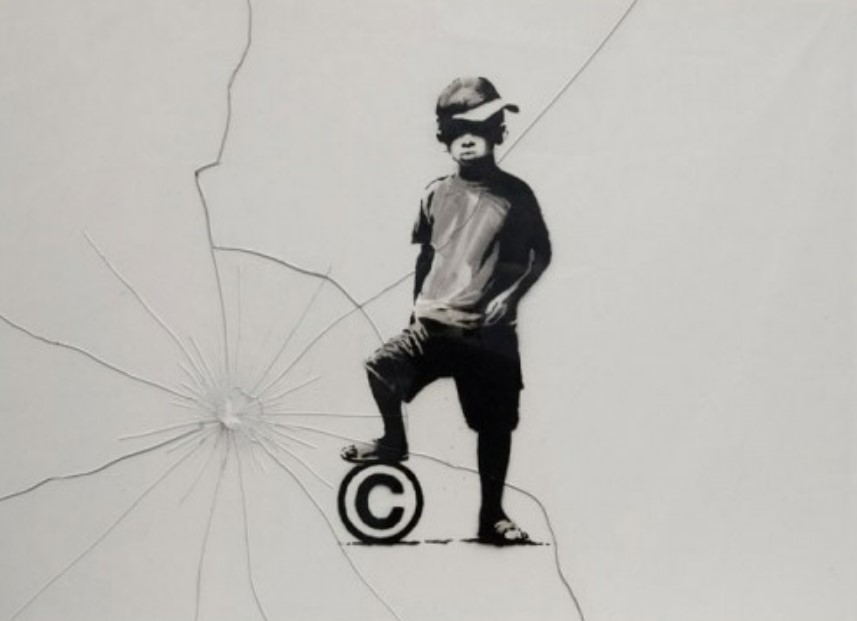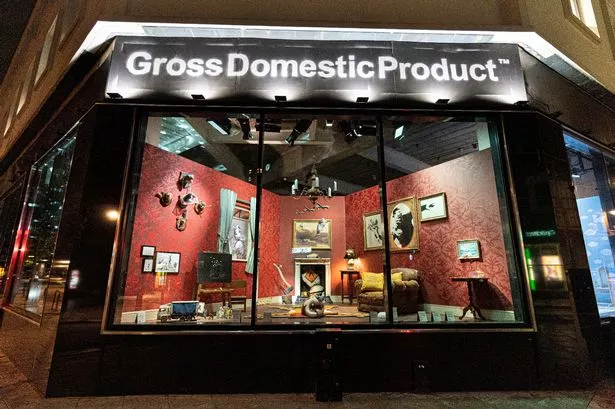This editorial on the reproduction of street art for commercial purposes was originally published in my street art newsletter, Beyond the Walls, which lands in inboxes on the 1st of every month with reflections and unexpected finds. This excerpt is from the May 1, 2025, edition. Subscribe here to receive future issues.
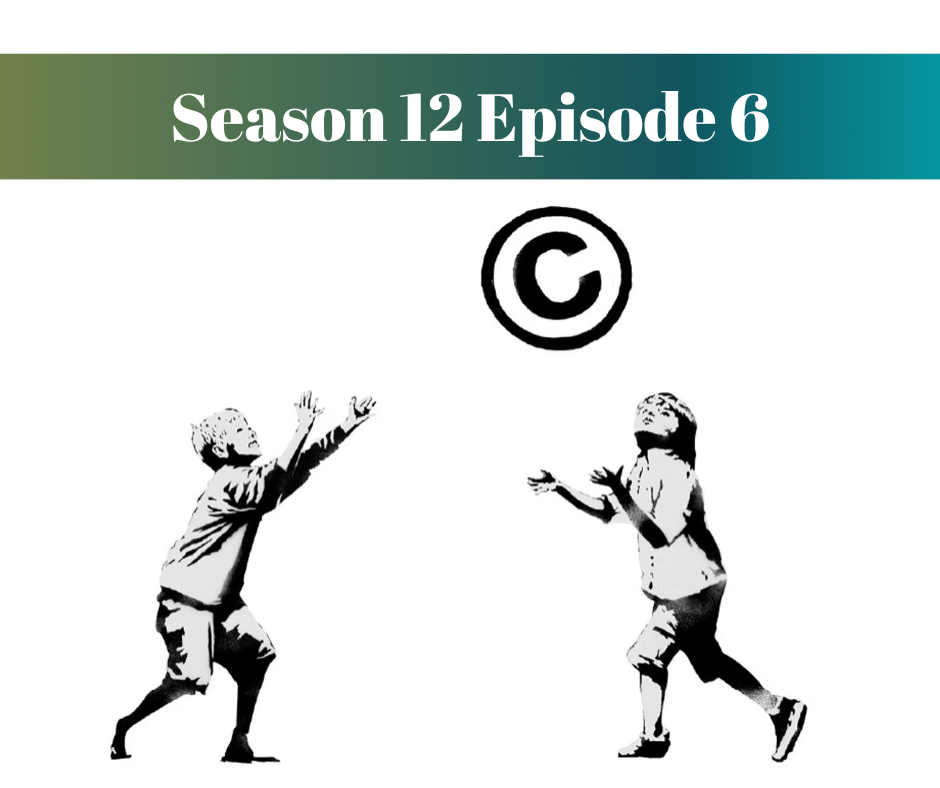
Exactly three months ago, we were talking about Ernest Zacharevich and the unauthorized commercial use of his artwork in Malaysia. Now, a similar story has unfolded in Italy—just ahead of Vinitaly, the country’s leading wine fair. For its opening event, the organizers launched a full-scale visual campaign built around reworked images of Keith Haring’s art—without ever obtaining permission.
The Keith Haring Foundation, which manages the rights to the artist’s work (and channels licensing revenue into nonprofits supporting children and AIDS-related causes—the disease that claimed Haring’s life), quickly clarified that no authorization had been granted.
To make matters worse, the campaign didn’t even credit Keith Haring.
As I wrote in the February 1st newsletter: “The right of attribution is paramount.” So not only did the organizers fail to ask—they also failed to acknowledge. Forget paying for a license—they didn’t even put the artist’s name on it.
Is Copyright for Losers? Reproducing Banksy’s Artworks.
I’ve already written about the paradox of law enforcement stepping in to protect illegal art—first when Banksy’s London Zoo series unfolded before my eyes, and later after watching the documentary Banksy and the Stolen Girl. So rather than revisiting those reflections, this time I want to focus on what happens when a work of street art is reproduced—whether for unauthorised merchandise or in any other context where third parties profit from it (as in the above-mentioned cases of Keith Haring and Ernest Zacharevich).
Copyright, in its traditional form, requires an identifiable author—someone who can be named, credited, and, if necessary, summoned to court. But Banksy has built his entire persona around anonymity, operating outside institutional systems and legal frameworks. As a result, claiming copyright becomes complicated—if not impossible.
Instead, Banksy turned to trademarks. By registering his name and certain images as trademarks, he found a legal workaround that allows him to block unauthorised commercial use—without compromising his identity.
The cornerstone of this strategy is Pest Control, the official body that authenticates Banksy’s works and manages legal matters on his behalf. It exists to preserve the integrity of his art while shielding him from commercial exploitation.
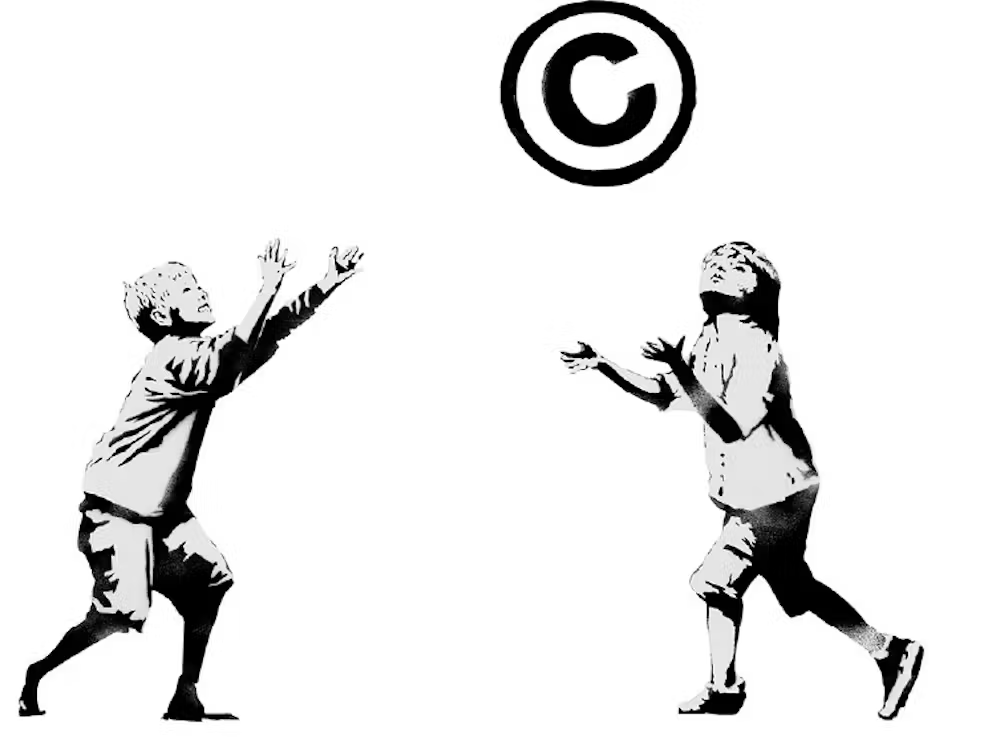
Despite these efforts, Banksy’s imagery has been widely—and often shamelessly—appropriated. From canvas reproductions to greeting cards, mugs, t-shirts, and even entire exhibitions, his work has been co-opted repeatedly without his consent.
One of the most prominent players in this grey market is Full Colour Black, a UK-based greeting card company that has been using Banksy’s images for years. The ongoing legal battle between the two has become emblematic of the limits and loopholes in Banksy’s legal protections. Full Colour Black claims that Banksy doesn’t make genuine commercial use of his trademarks and therefore shouldn’t be entitled to hold them. Banksy, on the other hand, accuses the company of exploiting his work under the guise of homage.
To counterattack, Banksy did something brilliant: he opened a shop. In 2019, Gross Domestic Product launched as a pop-up in Croydon, London, offering officially sanctioned merchandise—clocks, mugs, welcome mats, and more:
The shop was both a legal manoeuvre and a conceptual artwork—a tongue-in-cheek way to satisfy trademark requirements that demand a product be “used in commerce,” all while satirising the very idea of selling out.
Can Street Art Be Protected Without Being Institutionalised?
Back in 2005, in his book Wall and Piece, Banksy boldly declared, “Copyright is for losers.” The line summed up his anti-establishment ethos and his disdain for the commercial structures of the art world.
Yet today, in order to shield his work from unauthorised exploitation, he’s forced to engage with those very systems—registering trademarks, issuing legal threats, and navigating the bureaucracies he once mocked.
In the end, even Banksy can’t escape the machinery he critiques. The moment street art becomes valuable, it becomes vulnerable—and protecting it means making compromises that blur the line between rebellion and bureaucracy.
To read more editorials like this one, subscribe to my monthly newsletter
